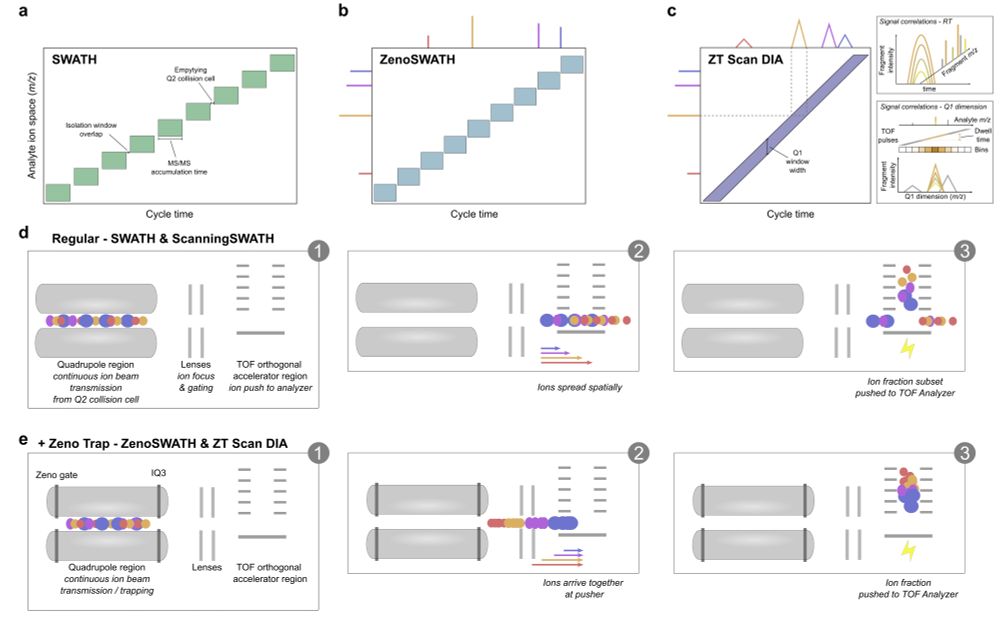to the best of my knowledge, "dwell time" here is defined as the time it takes to transfer ions of a certain m/z in the Q1. We tried to match ZT Scan's dwell time to ZenoSWATH's MS2 accumulation times for a fair comparison of both methods.
Indeed, 0.67 ms is the duration of a Zeno pulse.
to the best of my knowledge, "dwell time" here is defined as the time it takes to transfer ions of a certain m/z in the Q1. We tried to match ZT Scan's dwell time to ZenoSWATH's MS2 accumulation times for a fair comparison of both methods.
Indeed, 0.67 ms is the duration of a Zeno pulse.
A special Thanks to everyone involved from the Ralser Lab (ralser.group), SCIEX @sciex.bsky.social, as well as @vadim-demichev.bsky.social and @christophmessner.bsky.social.
A special Thanks to everyone involved from the Ralser Lab (ralser.group), SCIEX @sciex.bsky.social, as well as @vadim-demichev.bsky.social and @christophmessner.bsky.social.


